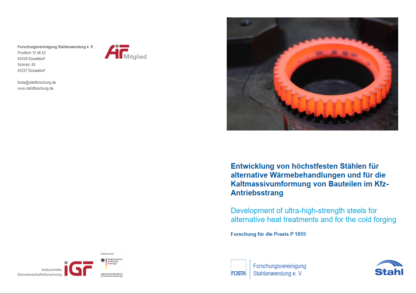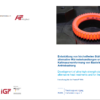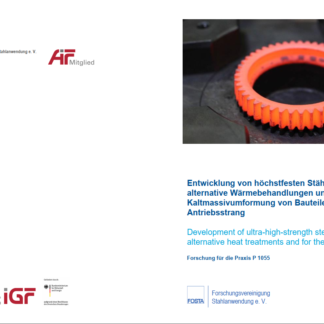Description
P 1055 – Development of ultra-high-strength steels for alternative heat treatments and for the cold forging of parts in the powertrain of passenger cars
The increasing demands in the passenger car sector for safety, comfort and driving
performance have led to a continuous increase in vehicle weight in recent years. New lightweight construction concepts are needed to meet this trend so that future
developments in driving performance can be achieved while at the same time reducing CO2 emissions and fuel consumption. Based on the current state of the art, approaches are made in the areas of material and design lightweight construction as well as production and concept lightweight construction. Within the scope of the present research project, new steels and/or an adapted heat treatment for components used in the powertrain were developed. The focus was on lightweight material construction. According to a study by the Institute for Automotive Engineering at RWTH Aachen University (ika), about 1/3 of the lightweight construction ideas for the powertrain are based on material lightweight construction. In this study, the problem was also identified that in many cases concepts in the area of material lightweight construction are directly
linked with other concepts in the area of structural lightweight construction or production lightweight construction. The very high costs involved have so far led to major obstacles in the implementation of these material lightweight construction approaches. In the present research project, this problem was addressed in cooperation with other subprojects.
An initial focus was on the development and optimization of steels with higher strength for lightweight applications in the powertrain. To this end, the chemical composition and heat treatment of case hardening and tempering steels already introduced on a large scale were modified in such a way that the potential of their property profile is exploited to a far greater extent than before. In addition, new material concepts using microalloying were specifically adapted to the promising heat treatment process of carbonitriding with a focus on industrial-scale implementation, which lead to higher component strength and thus have an increased lightweight construction potential. The lightweight design potential was
evaluated using the gear component in extensive experimental load-carrying capacity investigations.
The second focus of the research project was to increase the lightweight construction potential of the powertrain components in connection with lightweight manufacturing. Of particular interest here is the cold massive forming of steels with a high forming capacity, which are cheaper than lighter aluminium alloys and have the required high basic strength.
In order to ensure a cost reduction during production, it should be possible to dispense with subsequent heat treatment. For this reason, newly developed but not yet commercially available materials with higher formability for cold forging have been optimized with regard to their property profile and manufacturing method.
Main content only available in german language.
Published in:
February 2020
FOSTA – Research Association for Steel Application




